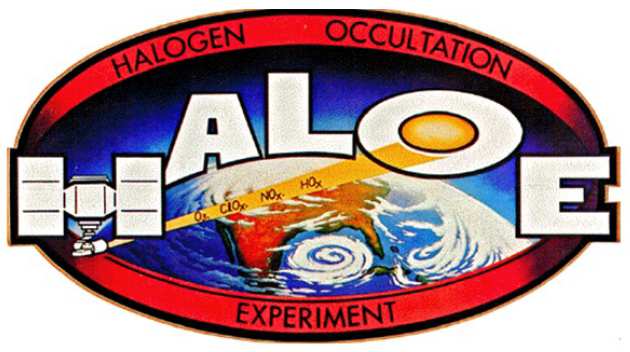Users Guide (Internal)
 The HALOE instrument flies on the Upper Atmosphere Research Satellite (UARS), and has been in operation since October 1991. It views solar infrared radiation by means of solar occultation, and measures water vapour, ozone, methane, hydrogen fluoride (HF), hydrogen chloride (HCl), nitrogen oxide (NO), nitrogen dioxide (NO2), temperature and aerosols. Latitudinal coverage is from 80oS to 80oN over the course of a year, and the altitude range of the measurements extends from 15 km to 60-130 km (depending on the constituent observed). Advantages of HALOE include high accuracy and self-calibration. In addition, HALOE is still in operation (at time of writing) and thus is very useful in the study of interannual variability of middle atmospheric constituents. Accordingly, the HALOE dataset forms a highly important basis of much middle atmosphere research.
The HALOE instrument flies on the Upper Atmosphere Research Satellite (UARS), and has been in operation since October 1991. It views solar infrared radiation by means of solar occultation, and measures water vapour, ozone, methane, hydrogen fluoride (HF), hydrogen chloride (HCl), nitrogen oxide (NO), nitrogen dioxide (NO2), temperature and aerosols. Latitudinal coverage is from 80oS to 80oN over the course of a year, and the altitude range of the measurements extends from 15 km to 60-130 km (depending on the constituent observed). Advantages of HALOE include high accuracy and self-calibration. In addition, HALOE is still in operation (at time of writing) and thus is very useful in the study of interannual variability of middle atmospheric constituents. Accordingly, the HALOE dataset forms a highly important basis of much middle atmosphere research.
Further information on HALOE is available from the HALOE homepage. The data is available from the BADC (UK) or the UARS central data handling facility, which also contains links to the homepages of other UARS instruments.